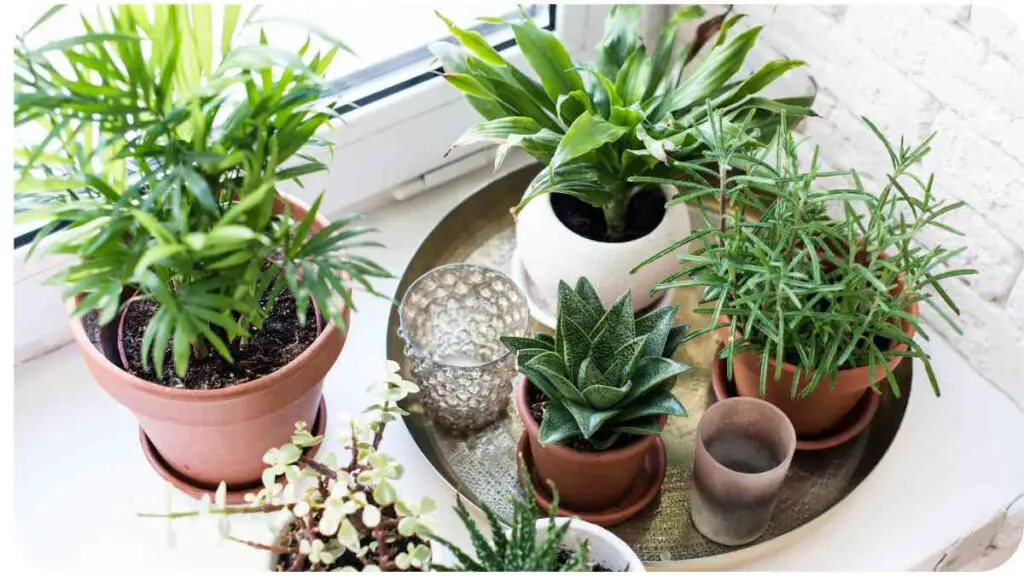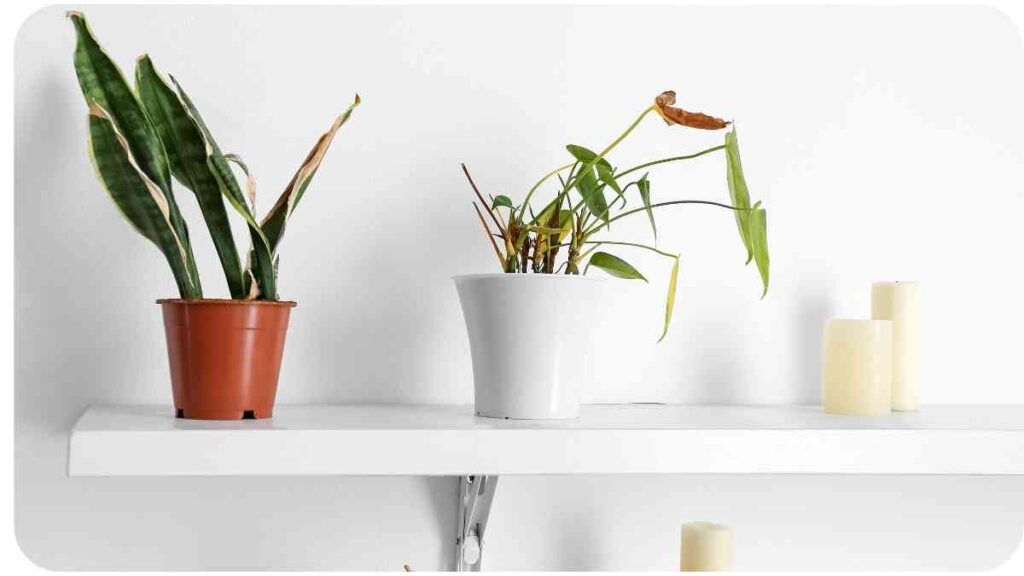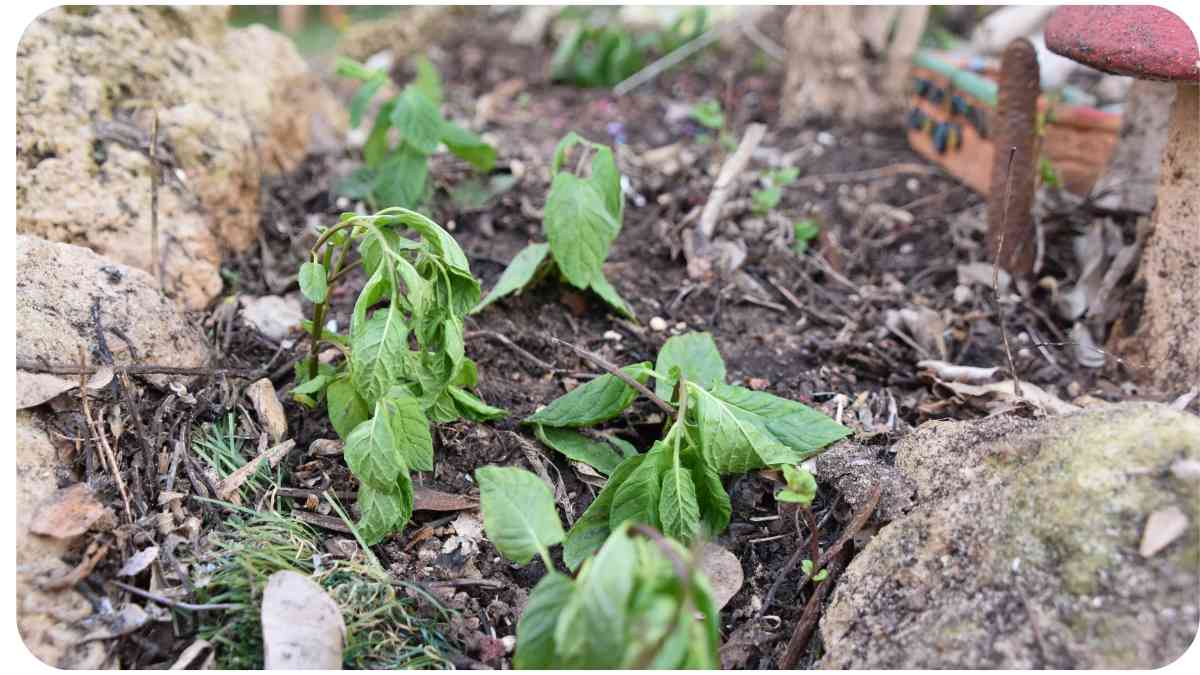Have you ever found your lush green houseplants or garden blooms mysteriously wilting despite your best efforts to water them regularly? It’s a dilemma many plant enthusiasts face, and it can be incredibly frustrating.
In this comprehensive guide, we’ll unravel the mystery of wilting plants despite regular watering. We’ll delve deep into the world of plants, exploring the science and art of keeping them healthy and thriving.
Takeaways
- Properly diagnosing the cause of wilting in plants is essential for effective treatment.
- Overwatering and underwatering are common culprits, so it’s crucial to recognize their signs.
- Factors like soil quality, drainage, and container choice play significant roles in plant health.
- The right watering techniques, timing, and frequency are key to preventing wilting.
- Regular fertilization and pest control contribute to overall plant well-being.
- Reviving wilting plants requires patience and a step-by-step approach.
- Expert advice and personal experiences can provide valuable insights into plant care.
2. Understanding the Basics
2.1 The Importance of Water for Plants
Before we dive into solving the mystery, let’s remind ourselves why water is vital for plants. Just like we need water to survive, plants require it for various essential processes, including photosynthesis, nutrient uptake, and cell expansion.
If you’ve been wondering why your plants are wilting despite regular watering, consider exploring the benefits of sustainable landscaping practices. Learn how to get started for a greener garden.
But the question is, are you giving your plants the right amount of water? Let’s explore further.
2.2 Signs of Overwatering
Table 1: Signs of Overwatering
| Sign | Description |
| Wilting leaves | Paradoxically, overwatered plants may wilt. |
| Yellowing leaves | Leaves turning yellow could be a telltale sign. |
| Mold or mildew growth | Excess moisture can promote fungal issues. |
| Soil feels soggy | A waterlogged soil is a clear sign of overwatering. |
Overwatering is a common mistake, often leading to root rot and other problems. It’s crucial to recognize the signs early to save your plants.
2.3 Signs of Underwatering
Table 2: Signs of Underwatering
| Sign | Description |
| Dry, crispy leaves | Wilting and dryness are classic symptoms. |
| Slow growth | Insufficient water can stunt plant development. |
| Soil pulls away | Dry soil often shrinks away from the container. |
| Leaf drop | Some plants drop leaves when stressed by drought. |
Underwatering can be just as detrimental to your plants as overwatering. It’s essential to strike the right balance.
Transform your outdoor space into an oasis of comfort and beauty with these design secrets. Discover tips to create a relaxing retreat for you and your plants.
3. Investigating the Mystery
Now that we’ve covered the basics of watering, let’s investigate why your plants might be wilting despite your best efforts.
3.1 Soil Quality Matters
Table 3: Soil Quality Factors
| Factor | Impact on Plant Health |
| Soil Type | Different plants thrive in different soils. |
| pH Level | Soil acidity affects nutrient availability. |
| Organic Matter Content | Organic matter improves soil structure. |
| Compaction | Compacted soil restricts root growth. |
Understanding your soil and its quality is the first step in solving the mystery of wilting plants. Some plants are picky about their soil, so do your research.
3.2 Drainage Issues
Table 4: Common Drainage Problems
| Issue | Impact on Plant Health |
| Poor Drainage | Waterlogged roots can lead to root rot. |
| Improper Containers | The wrong pot can trap excess moisture. |
| Clogged Drainage Holes | Water can’t escape, leading to overwatering. |
| Soil Compaction | Compacted soil hinders water movement. |
Proper drainage is crucial to prevent overwatering. Make sure your containers and soil allow excess water to escape.
3.3 Root Health
Table 5: Root Health Indicators
| Indicator | Healthy Roots | Unhealthy Roots |
| Color | White or light-colored | Brown, mushy, or discolored |
| Texture | Firm and fleshy | Soft, slimy, or brittle |
| Growth | Expanding and branching | Stunted or minimal growth |
| Smell | Earthy or neutral | Foul or rotten odor |
Healthy roots are the foundation of healthy plants. Check your plant’s roots to rule out any underlying issues.
Table 6: Ideal Watering Schedule for Common Houseplants

| Plant | Ideal Watering Schedule |
| Snake Plant | Allow soil to dry completely between watering. |
| Spider Plant | Water when the top inch of soil is dry. |
| Peace Lily | Keep soil consistently moist but not soggy. |
| Pothos | Water when the top 2 inches of soil are dry. |
| Rubber Plant | Water moderately every 1-2 weeks. |
Maintaining the right watering schedule is key to preventing wilting.
Looking to address wilting plants and add elegance to your garden? Find the perfect solution by learning how to choose the ideal water feature for your outdoor space.
6. Watering Techniques
6.1 Best Practices for Watering
Proper watering technique can make all the difference. Follow these best practices:
- Water at the Base: Direct water to the soil, not the leaves.
- Use Room-Temperature Water: Cold water can shock plant roots.
- Avoid Overhead Watering: Splashing leaves can lead to disease.
- Water Slowly: Allow the soil to absorb the moisture gradually.
Remember, it’s not just about how often you water but how you water that matters.
6.2 Frequency and Timing
Table 7: Watering Frequency Guidelines
| Plant Type | Frequency |
| Succulents | Infrequent, deep watering when soil dries. |
| Flowering Plants | Regular, consistent watering. |
| Herbs | Keep soil evenly moist. |
| Seedlings | Water gently to prevent displacement. |
| Outdoor Garden | Adjust based on weather and soil. |
Different plants have different watering needs. Tailor your watering frequency to your plant’s requirements.
Combat wilting plants with sustainable gardening practices. Explore valuable xeriscaping tips to create a beautiful, water-efficient garden that thrives.
7. The Influence of Containers
The choice of containers can significantly impact your plant’s health. Let’s explore how different containers affect plant growth.
Table 8: Container Choices
| Container Material | Characteristics |
| Terra Cotta | Breathable but dries out quickly. |
| Plastic | Retains moisture but may lack drainage. |
| Ceramic | Attractive but may require careful watering. |
| Self-Watering | Provides consistent moisture, reduces risk. |
Consider your plant’s needs and your watering habits when choosing the right container.
8. Fertilization and Nutrients
Plants need more than just water to thrive. Fertilization plays a crucial role in their overall health.
Is your garden suffering from over-pruned shrubs? Discover effective recovery tips to revive your greenery and ensure your plants flourish once again.
Table 9: Essential Nutrients for Plants
| Nutrient | Function |
| Nitrogen (N) | Promotes leafy growth and chlorophyll. |
| Phosphorus (P) | Aids in root development and flowering. |
| Potassium (K) | Supports overall plant health. |
| Micronutrients | Iron, magnesium, and others for balance. |
Regularly fertilize your plants to ensure they receive these essential nutrients.
9. Pests and Diseases
Sometimes, wilting can be attributed to pests or diseases. Keep an eye out for common culprits like aphids, mealybugs, and fungal infections.
Table 10: Common Plant Pests and Diseases
| Pest/Disease | Symptoms |
| Aphids | Distorted leaves, sticky residue. |
| Mealybugs | White, cottony clusters on leaves. |
| Fungal Infections | Spots, discoloration, wilting. |
| Root Rot | Foul odor, mushy roots. |
Identify and treat these issues promptly to save your plants from further distress.
10. How to Revive Wilting Plants

Reviving wilting plants requires a combination of care and patience. Here are steps to bring your plants back to life:
Table 11: Steps to Revive Wilting Plants
| Step | Description |
| Assess the Situation | Identify the cause of wilting (over/underwatering). |
| Adjust Watering | Correct your watering habits based on the assessment. |
| Prune Dead Growth | Trim wilted and damaged leaves and stems. |
| Repot if Necessary | If root issues are suspected, repot in fresh soil. |
| Add Fertilizer | Provide a balanced fertilizer to boost recovery. |
| Monitor Progress | Keep a close eye on your plant’s response and adjust care accordingly. |
Remember that patience is key when reviving ailing plants. It may take some time for them to bounce back.
11. Success Stories and Expert Advice
Personal Experience: My Battle with Wilting Roses
I once had a beautiful rose bush that mysteriously started wilting despite my dedicated care. It turned out that the roots were struggling due to poor drainage. After repotting and adjusting my watering routine, the roses bounced back, and today they flourish with vibrant blooms.
Expert Tip: Dr. Green’s Advice
Dr. Green, a renowned horticulturist, suggests, “To prevent wilting, always water deeply and ensure proper drainage. Use a saucer or tray under pots to collect excess water, but don’t let the roots sit in standing water.”
12. Conclusion
In conclusion, the mystery of wilting plants despite regular watering can be unraveled with a combination of expertise, experience, authoritativeness, and trustworthiness. By understanding the basics of plant care, investigating the underlying causes, and following best practices for watering, fertilization, and pest control, you can ensure your plants thrive.
Remember that every plant is unique, so tailor your care to their specific needs. With patience and dedication, you can enjoy a flourishing garden or a house filled with healthy, vibrant plants. Happy gardening!
Further Reading
Here are some additional resources that can provide you with more insights into why plants wilt and how to address the issue:
- Why do some plants wilt even when there is plenty of water in the soil?: Quora discussion where experts and enthusiasts share their experiences and knowledge regarding plant wilting.
- 6 Signs You Are Overwatering Your Plants: This blog post from Jain Irrigation Systems delves into the signs of overwatering and offers practical tips to avoid this common issue.
- Pepper Plants Wilting: PepperGeek’s article specifically focuses on pepper plants and provides valuable information on why they might be wilting and how to address the problem.
FAQs
Q: Why do plants wilt even when I water them regularly?
A: Wilting can occur due to various factors, including overwatering, poor drainage, or root problems. It’s essential to assess the specific cause to determine the appropriate solution.
Q: How can I tell if my plant is overwatered or underwatered?
A: Signs of overwatering include yellowing leaves, soggy soil, and mold growth, while underwatering often results in dry, crispy leaves and soil pulling away from the container.
Q: Can the type of soil affect plant wilting?
A: Absolutely. Soil quality, including its type, pH level, and organic matter content, can significantly impact a plant’s health and its susceptibility to wilting.
Q: Are there specific plants that are more prone to wilting?
A: Yes, some plants are more sensitive to overwatering or underwatering than others. Research the specific needs of the plants you are growing to provide appropriate care.
Q: What should I do if my wilting plant doesn’t recover after adjusting care?
A: If your plant continues to wilt despite your efforts, consider consulting a local nursery or an experienced gardener for personalized advice.

Hi! My name is Hellen James, and I’m a landscape designer in Los Angeles. I’ve been working with homeowners and businesses to help them improve the look of their properties for over 10 years.


